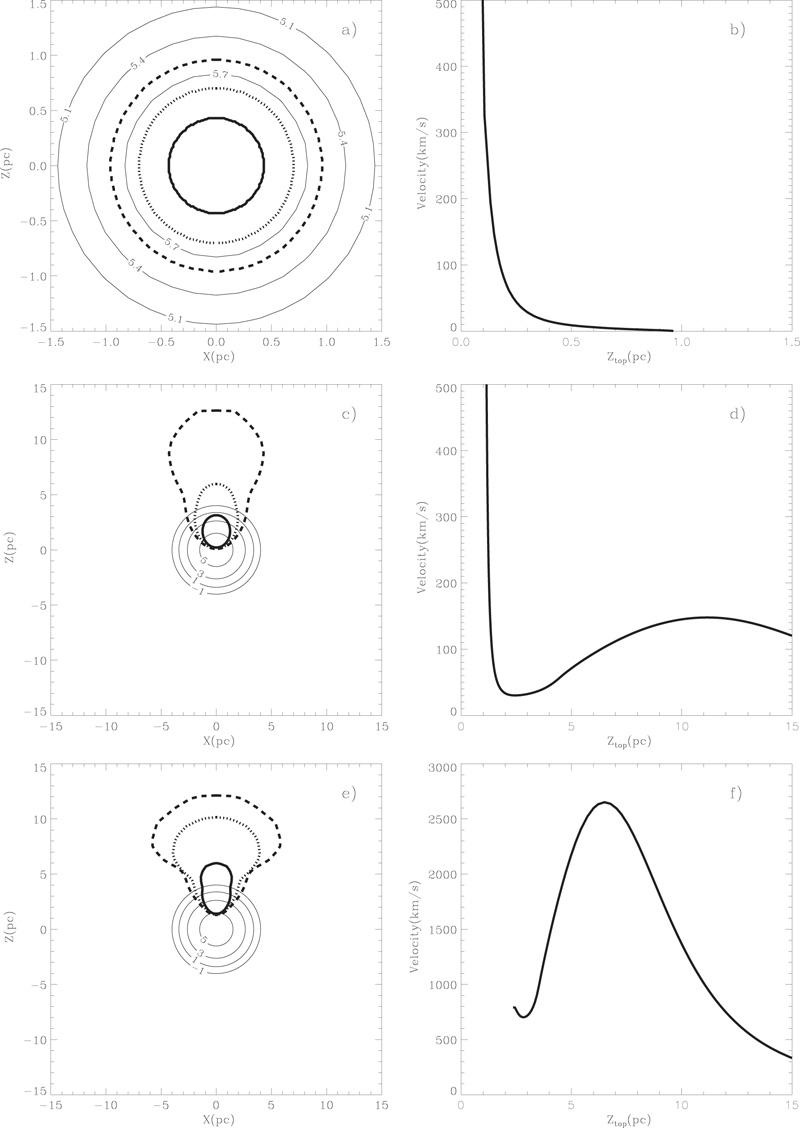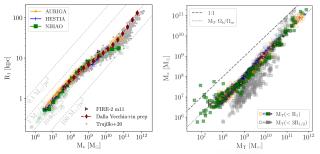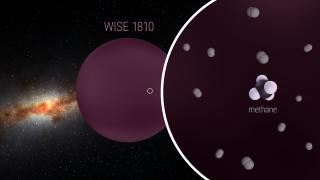Our arguments deal with the early evolution of Galactic globular clusters and show why only a few of the supernovae products were retained within globular clusters and only in the most massive cases (M>106 solar masses) while less massive clusters were not contaminated at all by supernovae. Here we show that supernova blast waves evolving in a steep density gradient undergo blowout and end up discharging their energy and metals into the medium surrounding the clusters. This inhibits the dispersal and the contamination of the gas left over from a first stellar generation. Only the ejecta from well-centered supernovae, that evolves into a high-density medium available for a second stellar generation in the most massive clusters would be retained. These are likely to mix their products with the remaining gas, leading in these cases eventually to a Fe contaminated second stellar generation.
Evolution of the volume occupied by the ejecta (left panels) and the shock top pole velocity (right panels). Panels (a) and (b), (c) and (d), (e) and (f) show the results of the calculations when the explosion occurs at Zoff = 0 pc, 1 pc, and 2 pc from th
Advertised on
References



